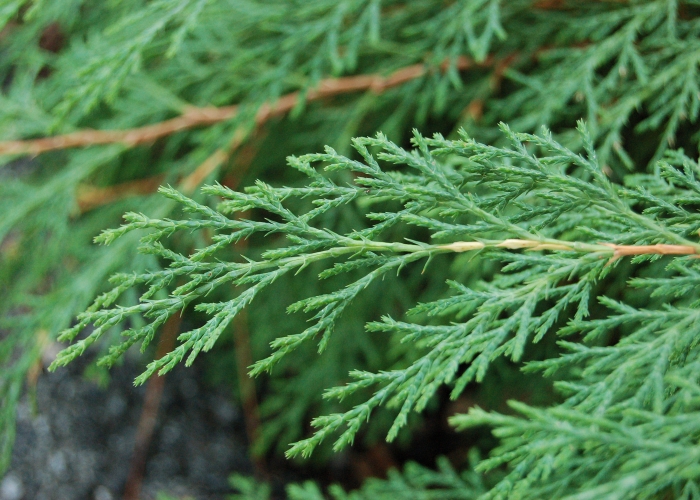Siberian Cypress
(Microbiota decussata)
Siberian Cypress (Microbiota decussata)
/
/

Photo (c)2006 Derek Ramsey (Ram-Man)
CC BY-SA 2.5
Image By:
Photo (c)2006 Derek Ramsey (Ram-Man)
Recorded By:
Copyright:
CC BY-SA 2.5
Copyright Notice:
Photo by: Photo (c)2006 Derek Ramsey (Ram-Man) | License Type: CC BY-SA 2.5 | License URL: https://creativecommons.org/licenses/by-sa/2.5 | Uploader: Ram-Man | Publisher: Wikimedia Commons | Title: Russian_Arborvitae_Microbiota_decussata_Leaves_2800px.JPG | Notes: |































Estimated Native Range
Summary
Microbiota decussata, commonly known as Siberian Cypress, is an evergreen shrub native to the mountainous regions of the Russian Far East, particularly the Sikhote-Alin range. It is a low-growing, prostrate shrub reaching 20–50 cm (8–20 in) in height and spreading 2–5 m (6.6–16.4 ft) wide. Its foliage, which forms flat sprays, consists of scale-like leaves 2–4 mm long. The plant produces very small cones, 2–3 mm long, which are among the smallest of any conifer, maturing from green to brown in about 8 months after pollination. Each cone typically contains one seed, occasionally two, which are 2 mm long and wingless. In winter, the foliage may turn brown, mimicking dormancy, but it rejuvenates come spring.
Siberian Cypress is appreciated for its ground-covering habit, making it a suitable choice for gardens and parks. It is particularly valued for its drought tolerance and ability to withstand cold temperatures and winter conditions. It has earned the Royal Horticultural Society’s Award of Garden Merit, signifying its excellence for garden use. Siberian Cypress is best cultivated in full sun to part shade, requiring medium water and well-drained soils. It is often used for erosion control on slopes due to its spreading nature and is also planted in rock gardens for its textural interest.CC BY-SA 4.0
Siberian Cypress is appreciated for its ground-covering habit, making it a suitable choice for gardens and parks. It is particularly valued for its drought tolerance and ability to withstand cold temperatures and winter conditions. It has earned the Royal Horticultural Society’s Award of Garden Merit, signifying its excellence for garden use. Siberian Cypress is best cultivated in full sun to part shade, requiring medium water and well-drained soils. It is often used for erosion control on slopes due to its spreading nature and is also planted in rock gardens for its textural interest.CC BY-SA 4.0
Plant Description
- Plant Type: Shrub
- Height: 0.5-1.5 feet
- Width: 3-12 feet
- Growth Rate: Slow
- Flower Color: N/A
- Flowering Season: Non-Flowering
- Leaf Retention: Evergreen
Growth Requirements
- Sun: Full Sun, Part Shade
- Water: Medium
- Drainage: Fast
Common Uses
Bank Stabilization, Border Plant, Deer Resistant, Erosion Control, Groundcover, Low Maintenance, Rabbit Resistant, Rock Garden, Street Planting
Natural Habitat
Mountainous regions of the Russian Far East, particularly the Sikhote-Alin range
Other Names
Common Names: Russian Arborvitae, Kryptuja
Scientific Names: , Microbiota decussata, Platycladus decussata,
GBIF Accepted Name: Microbiota decussata Kom.